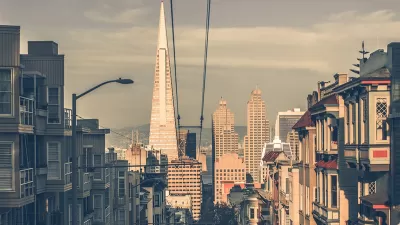Chicago has a reputation for being the most development-friendly city this side of Houston. But Stephen J. Smith cites restrictive zoning outside the Loop as one cause of the city’s anemic housing market.
“For pro-development types, Chicago is often thought of as something of a promised land. While it may not have Houston’s complete lack of a zoning code, the Second City is known as a much easier place to build than its coastal counterparts,” writes Stephen J. Smith.
Smith’s recent article in Next City, however, argues that outside of the Loop, Chicago’s zoning regulations are actually slowing the growth of the city’s housing stock in a manner not in keeping with the city’s reputation.
The city’s lax development regulations are often credited with keeping housing prices low. In fact, condo prices in New York City are often twice as expensive as condo prices in Chicago. But complicating the traditional narrative is the curious case of Lincoln Park, which has actually lost housing in recent years—almost apace with parts of the Southside currently engaged in a vacant lot fire sale.
Smith reminds readers: “it’s important not to forget the mid-rises and infill housing that aren’t going up in some of the most desirable, more established neighborhoods.”
FULL STORY: Is Chicago Still the Urban Development Promised Land?

Planetizen Federal Action Tracker
A weekly monitor of how Trump’s orders and actions are impacting planners and planning in America.

Restaurant Patios Were a Pandemic Win — Why Were They so Hard to Keep?
Social distancing requirements and changes in travel patterns prompted cities to pilot new uses for street and sidewalk space. Then it got complicated.

Map: Where Senate Republicans Want to Sell Your Public Lands
For public land advocates, the Senate Republicans’ proposal to sell millions of acres of public land in the West is “the biggest fight of their careers.”

Maui's Vacation Rental Debate Turns Ugly
Verbal attacks, misinformation campaigns and fistfights plague a high-stakes debate to convert thousands of vacation rentals into long-term housing.

San Francisco Suspends Traffic Calming Amidst Record Deaths
Citing “a challenging fiscal landscape,” the city will cease the program on the heels of 42 traffic deaths, including 24 pedestrians.

California Homeless Arrests, Citations Spike After Ruling
An investigation reveals that anti-homeless actions increased up to 500% after Grants Pass v. Johnson — even in cities claiming no policy change.
Urban Design for Planners 1: Software Tools
This six-course series explores essential urban design concepts using open source software and equips planners with the tools they need to participate fully in the urban design process.
Planning for Universal Design
Learn the tools for implementing Universal Design in planning regulations.
Heyer Gruel & Associates PA
JM Goldson LLC
Custer County Colorado
City of Camden Redevelopment Agency
City of Astoria
Transportation Research & Education Center (TREC) at Portland State University
Camden Redevelopment Agency
City of Claremont
Municipality of Princeton (NJ)





























